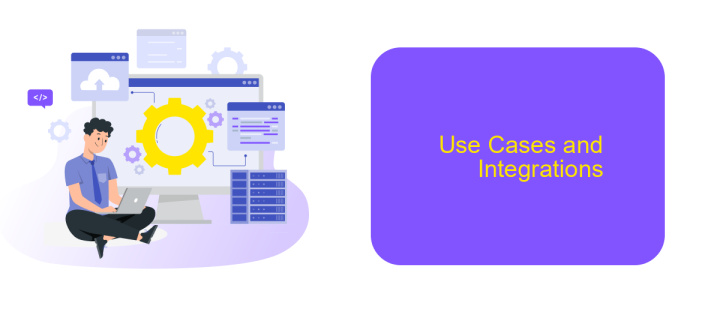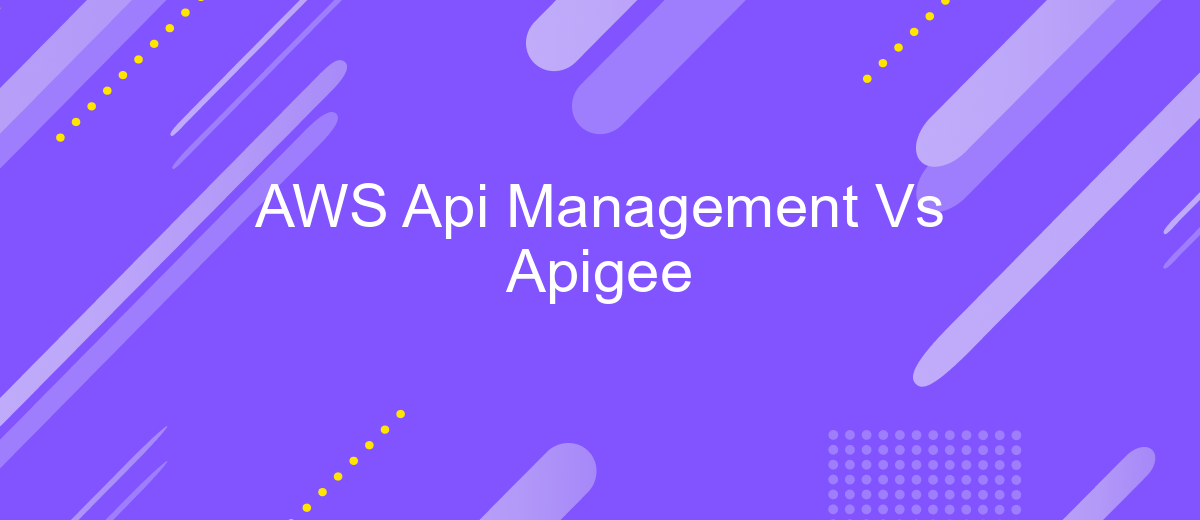AWS Api Management Vs Apigee
In the rapidly evolving landscape of cloud computing, effective API management is crucial for ensuring seamless integration and scalability. Two major players in this domain are AWS API Management and Apigee. This article delves into a comparative analysis of these platforms, evaluating their features, performance, and usability to help organizations make informed decisions tailored to their specific needs.
Introduction
In the rapidly evolving world of cloud computing and API management, two prominent platforms stand out: AWS API Management and Apigee. Both offer robust solutions for managing and deploying APIs, but they cater to different needs and use cases. Understanding the strengths and weaknesses of each platform can help organizations make informed decisions about which solution best fits their requirements.
- AWS API Management: A comprehensive suite of tools provided by Amazon Web Services for creating, deploying, and managing APIs at any scale.
- Apigee: A powerful API management platform by Google Cloud, designed to help organizations build and manage APIs with advanced analytics and security features.
Additionally, integrating these platforms with other services can enhance their capabilities. For instance, using ApiX-Drive, a service that facilitates seamless integration between different systems and applications, can streamline API workflows and improve efficiency. By leveraging ApiX-Drive, businesses can automate data transfers and synchronize information across multiple platforms, ensuring smooth and effective API management.
Key Features Comparison

When comparing AWS API Management and Apigee, one of the primary differences lies in their integration capabilities. AWS API Management offers seamless integration with other AWS services, providing a cohesive ecosystem for developers already invested in the AWS cloud. This allows for streamlined workflows and simplified management of resources. On the other hand, Apigee, a Google Cloud product, excels in its robust analytics and monitoring tools, offering detailed insights into API performance and usage patterns. This can be particularly beneficial for businesses looking to optimize their API strategies based on data-driven decisions.
Another key feature to consider is the ease of use and customization options. AWS API Management provides a user-friendly interface with extensive documentation, making it accessible for both beginners and experienced developers. Additionally, it supports a wide range of programming languages and frameworks. Apigee, however, stands out with its advanced security features, including OAuth, JWT, and API key validation, ensuring that APIs are well-protected against potential threats. Both platforms also support third-party integration tools like ApiX-Drive, which can further simplify the process of connecting various applications and services, enhancing overall productivity and efficiency.
Pricing

When comparing the pricing structures of AWS API Management and Apigee, it's essential to consider the different pricing models and features offered by each platform. Both services provide flexible options to accommodate various business needs, but they differ in their approach and cost implications.
- AWS API Management: AWS offers a pay-as-you-go model, which means you only pay for the API calls you make and the data transferred. This model is ideal for businesses that need scalability and want to avoid upfront costs.
- Apigee: Apigee provides subscription-based pricing with different tiers, including Standard, Enterprise, and Enterprise Plus. Each tier offers a set number of API calls, analytics, and support levels, making it suitable for organizations with predictable API usage patterns.
In addition to these platforms, services like ApiX-Drive can help streamline integration processes by automating data transfer between different applications, potentially reducing the overall cost and complexity of managing APIs. By evaluating your specific needs and usage patterns, you can choose the most cost-effective solution for your business.
Use Cases and Integrations

When it comes to API management, both AWS and Apigee offer robust solutions tailored to different business needs. AWS API Gateway is ideal for organizations deeply embedded in the AWS ecosystem, providing seamless integration with other AWS services like Lambda, DynamoDB, and IAM. On the other hand, Apigee, a Google Cloud product, excels in hybrid and multi-cloud environments, making it a versatile choice for businesses looking to manage APIs across various platforms.
Both AWS API Gateway and Apigee support a wide range of use cases, from simple API proxying to complex API orchestration. They offer features like rate limiting, analytics, and security to ensure your APIs are reliable and secure. However, the choice between them often boils down to specific integration needs and existing infrastructure.
- API monitoring and analytics
- Security and rate limiting
- Seamless integration with cloud services
- Customizable API gateways
For businesses looking to streamline API integrations, services like ApiX-Drive can be invaluable. ApiX-Drive allows for easy connection and automation between various applications, reducing the complexity of manual integrations. Whether you choose AWS API Gateway or Apigee, leveraging such tools can enhance your API management strategy.
Conclusion
In conclusion, both AWS API Management and Apigee offer robust solutions for managing APIs, each with its own strengths and unique features. AWS API Management excels in its seamless integration with other AWS services, making it an ideal choice for organizations already leveraging the AWS ecosystem. On the other hand, Apigee stands out with its comprehensive analytics and developer-centric tools, providing a more detailed insight into API performance and usage.
Choosing between these two platforms ultimately depends on the specific needs and existing infrastructure of your organization. For those looking to streamline integrations further, services like ApiX-Drive can play a crucial role. ApiX-Drive simplifies the process of connecting various applications and automating workflows, thereby enhancing the efficiency of your API management strategy. By carefully evaluating your requirements and leveraging the right tools, you can ensure a well-optimized and effective API management solution.
- Automate the work of an online store or landing
- Empower through integration
- Don't spend money on programmers and integrators
- Save time by automating routine tasks
FAQ
What is the primary difference between AWS API Management and Apigee?
Which platform is better for a multi-cloud strategy?
How do these platforms handle API security?
What are the costs associated with AWS API Management vs Apigee?
How can I integrate these platforms with other tools for automation and data synchronization?
Time is the most valuable resource in today's business realities. By eliminating the routine from work processes, you will get more opportunities to implement the most daring plans and ideas. Choose – you can continue to waste time, money and nerves on inefficient solutions, or you can use ApiX-Drive, automating work processes and achieving results with minimal investment of money, effort and human resources.


